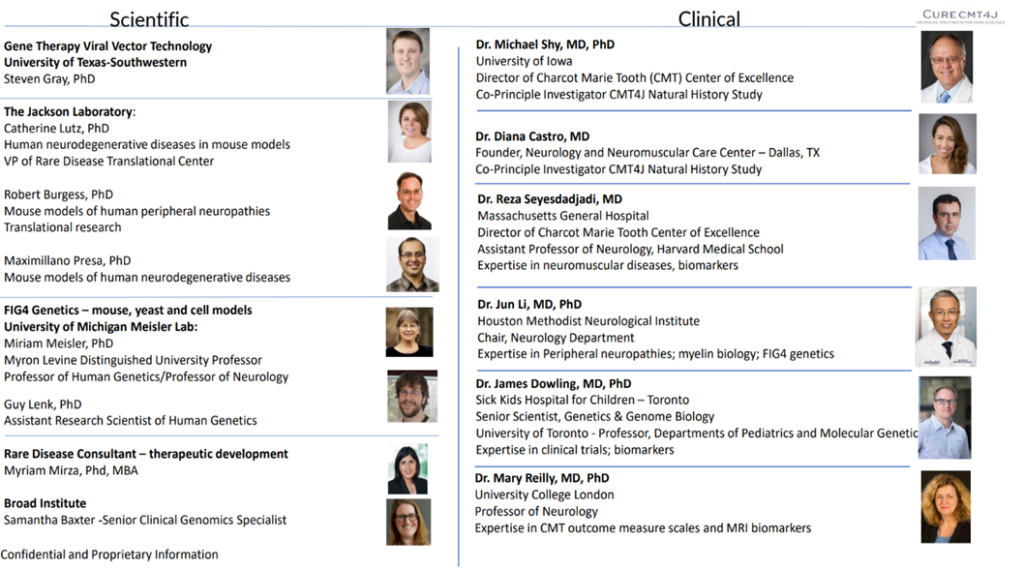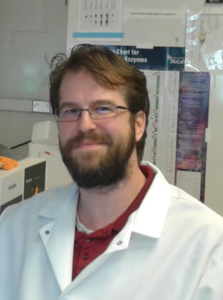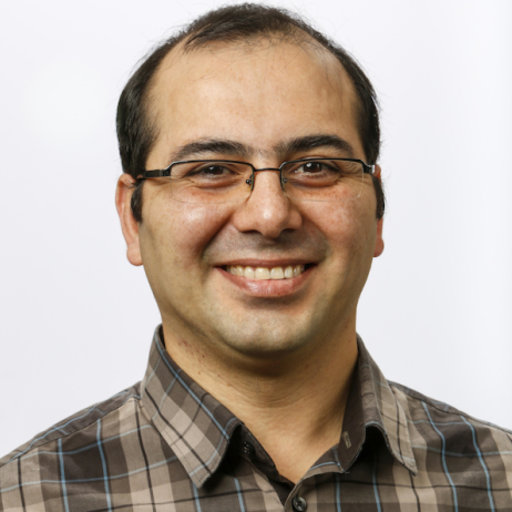The CureCMT4J Research Team

Research Team Bios

Steven J. Gray, PhD / University of Texas – Southwestern
Dr. Gray’s core expertise is in AAV gene therapy vector engineering, followed by optimizing approaches to deliver a gene to the nervous system. His major focus is in AAV vector development to develop vectors tailored to serve specific clinical and research applications involving the nervous system. Dr. Gray is an Associate Professor in the Department of Pediatrics. Dr. Gray’s research interests and expertise include:
- Adeno-Associated Virus (AAV) vector engineering
- Developing AAV vector-based treatments (gene therapy) for nervous system diseases
- Facilitating bench-to-bedside translation of gene therapy into Phase I clinical trials
- Improving AAV vector manufacturing processes
- Understanding and overcoming immune responses associated with viral vector-based gene therapy approaches

Cathleen Lutz, PhD / The Jackson Laboratory
Dr. Lutz is the Director of the Rare and Orphan Disease Center at The Jackson Laboratory. She holds a PhD in Biochemistry with a Master’s degree in Business Administration. She oversees both the Mouse Repository and the In Vivo Pharmacology program at The Jackson Laboratory in Bar Harbor, Maine.
Dr. Lutz and her team work collaboratively with numerous disease foundations to ensure the preclinical mouse models are well characterized and available to the scientific community. In addition to genetically engineering new models for preclinical discovery, Dr. Lutz and her team perform in vivo pharmacology and efficacy experiments for new potential therapeutics.
Dr. Lutz is the Co-Principal Investigator to the new NIH grant at The Jackson Laboratory, Resource for Research of Peripheral Neuropathy, which serves to accelerate the creation, distribution and use of high-priority mouse models for CMT research. She is joined in this effort with her colleagues Professor Robert Burgess, PhD and Research Scientist Kevin Seburn, Ph.D.

Dr. Guy Lenk, PhD /
Meisler Lab / University of Michigan – Department of Human Genetics
Dr. Guy Lenk is an Assistant Research Scientist in the Department of Human Genetics, at the University of Michigan. Dr. Lenk has been working on the FIG4 mutation involved with CMT4J for over ten years. Lenk and coworkers have developed more than ten different mouse models of the FIG4 mutation. Several of these models serve as the basis of phenotype and natural history information for current CMT4J research at The Jackson Laboratory. Lenk has written or co-written 17 scientific publications related to FIG4 and associated rare diseases. Dr. Lenk has also identified two other FIG4 disorders caused by the FIG4 mutation: Yunis Varon Syndrome and familial epilepsy with polymicrogyria.

Robert Burgess, PhD — The Jackson Laboratory
Dr. Burgess’ research focuses on molecular mechanisms involved in peripheral neuromuscular diseases. Dr. Burgess is the recipient of an NIH grant focusing on creating and using mouse models for Charcot Marie Tooth research.

Dr. Diana Castro, MD / Founder, Neurology and Neuromuscular Care Center – Dallas, TX
Dr. Castro is the co-Principle Investigator on the CMT4J Natural History Study
Co-Principle Investigator CMT4J Natural History Study

Maximiliano Presa, PhD
Study Director, The Jackson Laboratory – Bar Harbor, ME
Dr. Presa’s work involves the development and molecular characterization of new mouse models for human diseases. His work uses these models as a platform for pre-clinical evaluation of novel therapies. Dr. Presa ultimately served as the lead author and investigator in CureCMT4J’s preclinical proof of concept (POC) published in The Journal of Clinical Investigation.

Miriam Meisler, PhD
Director, Meisler Lab / University of Michigan – Department of Human Genetics
Myron Levine Distinguished University Professor
Professor of Human Genetics/Professor of Neurology
The Meisler Lab elucidates the molecular mechanisms underlying inherited neurological disorders in an effort to evaluate therapeutic interventions. For nearly two decades Dr. Meisler and her lab have been studying the underpinnings of FIG4, the gene implicated in CMT4J. Positional cloning of a spontaneous mouse mutation in the FIG4 gene was the starting point for identification of its causal role in CMT4J (Nature, 2007). The lab subsequently identified FIG4 mutations other disorders, Yunis-Varón Syndrome (Am. J. Hum. Genet.) and Polymicrogyria with seizures (Neurology), as well as Parkinsonian, ALS, and MS-like presentations. The Meisler Lab has characterized the pathogenic mechanisms of several mutant alleles of FIG4, PIKFYVE and VAC14 affecting PI(3,5)P2 biosynthesis in humans and mice.

Recent Comments